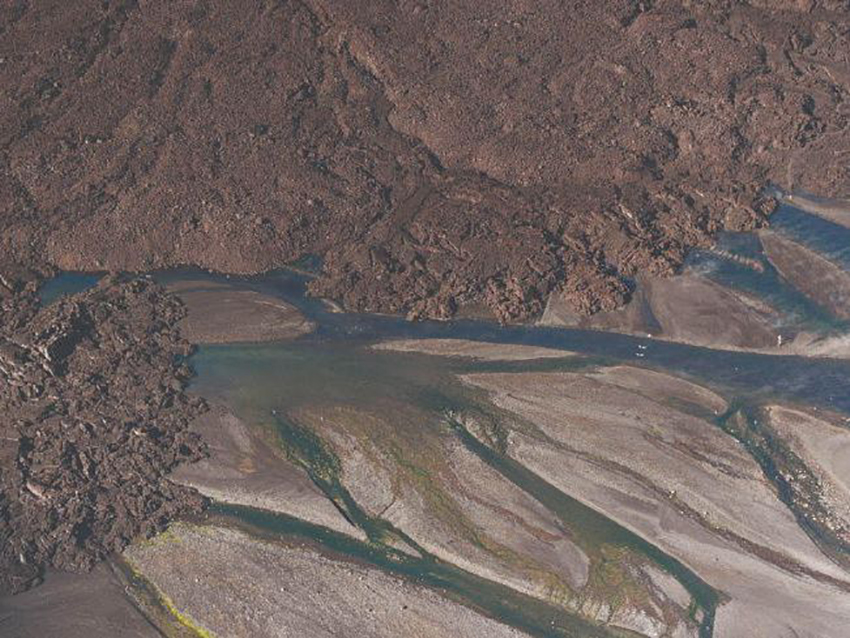
Futurum - March 9, 2021
When we think of astronauts, deep-sea exploration is not the first thing that springs to mind. Similarly, space walks are not usually associated with oceanographers. And yet, oceans are often used in the preparation for space exploration. For instance, lengthy dives in weighted diving suits mimic the Moon’s low-gravity environment, and underwater research labs provide a practice setting for life on the International Space Station.
Nonetheless, the connection between our oceans and space can go far beyond space walking and deep-sea diving. Dr Solange Duhamel, an oceanographer, and Dr Christopher Hamilton, a planetary scientist, both based at the University of Arizona, have pooled their expertise in two very different disciplines to work on collaborative research projects in astrobiology, including investigations of hydrothermal systems in Iceland, to uncover what life in these extreme environments might reveal about life on Mars.
WHY DID SOLANGE AND CHRISTOPHER GO ON AN EXPEDITION TOGETHER?
Six months after the end of the 2014–2015 Holuhraun eruption in Iceland, Christopher led a team that studied the lava flow-field and observed a lava-induced hydrothermal system where the lava had entered a segment of the Jokulsa a Fjollum river. However, the initial team did not include any biologists and so, Christopher invited Solange – an oceanographer and expert in environmental microbiology and biogeochemistry – to join them the following year. With Solange on board, the team returned to the field site to investigate the unusual forms of life that had developed within Holuhraun’s hydrothermal systems.
Christopher is a planetary volcanologist and the Holuhraun eruption – which took place in a pristine part of the Iceland highlands – was immediately important as an analogue for Mars. In contrast, Solange is an oceanographer, with expertise in how life can thrive in extreme environments. Solange explains, “When I joined the expedition led by Christopher, the team was composed of geologists and planetary scientists – I was the only biologist. I brought new competences to the group and together we have been able to gather a complementary set of physical, chemical and biological data to characterise the ecology and biogeochemistry of the system at Holuhraun.”
WHAT MAKES A TERRAIN, SUCH AS HOLUHRAUN, ANALOGOUS WITH MARS?
Holuhraun is located within a barren sand sheet in Icelandic highlands, between the Vatnajokull ice cap and the Askja central volcano. “This high-altitude location has very little vegetation and resembles the surface of Mars. Volcanic eruptions on Mars also tend to be larger than recent eruptions on Earth, but the 2014–2015 Holuhraun eruption generated the largest outpouring of lava in Iceland during the past 235 years,” explains Christopher. “This makes the terrain similar to Martian lava flows.”
WHAT HAVE THE LAVA-INDUCED HYDROTHERMAL SYSTEMS REVEALED ABOUT MARS?
Solange explains, “When the Holuhraun lava flow inundated a segment of the Jokulsa a Fjollum river, it created unusual forms of hydrothermal activity. This was very exciting because those conditions could mimic those found on Mars in the past.”
Given the extreme conditions on Mars, if there is life on the Red Planet, it must be adapted to extreme environments. On Earth, thermophiles (organisms that thrive at high temperatures between 50⁰C and 122⁰C), may be among the oldest forms of life on the planet. With so many volcanoes on Mars, it is possible that large lava flows – similar to the ones in Iceland – may have interacted with near-surface water to generate hydrothermal environments.
“One of the astonishing things about the recent Holuhraun eruption is how quickly life populated its lava-induced hydrothermal systems,” says Christopher. “Just months after the end of the eruption, hot springs emerging from the lava flow contained algae and other microorganisms that may have been hiding dormant in the sand, just waiting for the right conditions to spring back to life.” If similar microbes live on Mars, large volcanic eruptions might hold the key to the episodic flourishing of microbial life on Mars.
COULD THERE BE LIFE ON MARS?
Solange and Christopher’s studies have shown that life very quickly emerged in the lava-induced hydrothermal systems, which gives rise to the possibility that there could well be life in similar environments on Mars. The identification of potentially habitable locations on other planets is a fundamentally important issue, and NASA’s Mars 2020 mission – currently en route to Mars – will be the first rover capable of collecting astrobiologically relevant samples for return to laboratories on the Earth. This mission is particularly exciting because it will land in Jezero Crater, which includes volcanic units that may have generated hydrothermal systems just like the ones observed in Iceland.
A MARRIAGE OF DISCIPLINES
Solange and Christopher met while working on separate research projects in Hawaii twelve years ago. Now married, they have not only established their own successful careers investigating different scientific problems in environmental microbiology (Solange) and planetary science (Christopher), but have also come together to work on fascinating projects, such as this one in Iceland.
From those individual research projects in Hawaii, to travelling the world and conducting their own novel research, to collaborating together to investigate life in extreme environments, Solange and Christopher remind us just how much there is to explore in our world and how individual strengths and interdisciplinary collaboration reap rewards. The question is, where in the world will your explorations take you?

